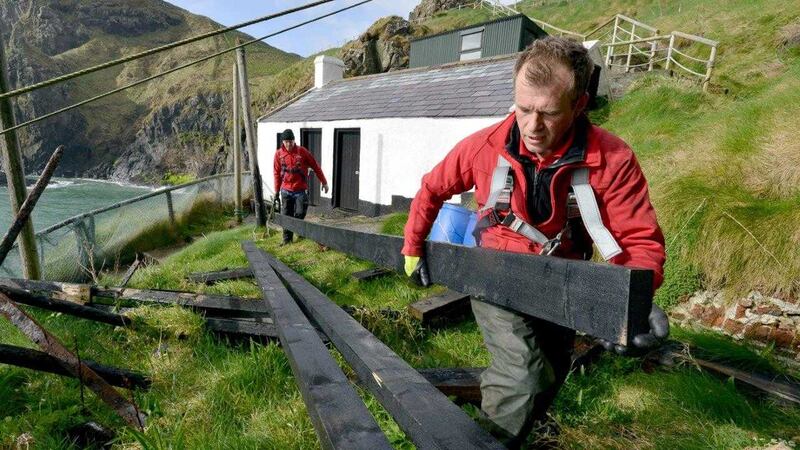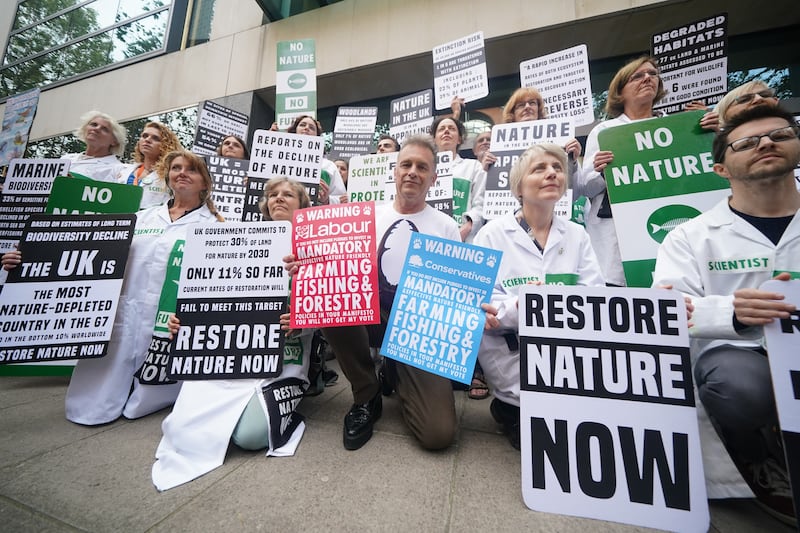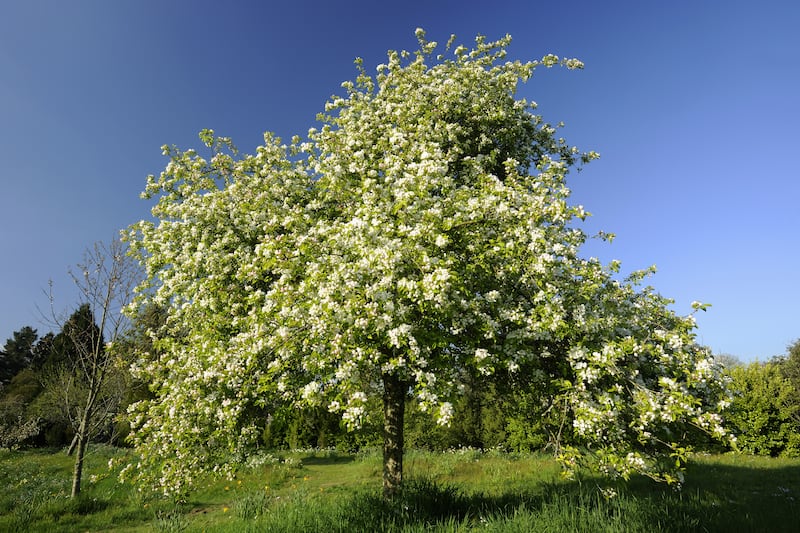A CRANE used by fishermen on Carrick-a-Rede Island has been repaired by the National Trust after being damaged during storms in 2014.
Operated by a hand-powered winch, the crane is fixed to the cliff-face at Carrick-a-Rede Island and is used to lift and lower a fishing boat up and down into the water.
Having weathered the elements for over a century, the crane’s timber frame was extensively damaged by winter storms in 2014.
Frank Devlin, the National Trust’s Countryside Manager for the Causeway Coast and Glens, explained that the crane damage was “as much old age as anything else.”
“The lower part came loose and got swept away,” he said.
“The oldest parts on the crane were 100 years old. It had been patched up over the years but the current crane is a total replacement of the original.”
Mr Devlin said that the crane was “integral” to the island’s fishery, as it enabled a boat that would be damaged if left at sea to be docked on dry land.
“There’s no other way to land fish on the island. It would be complicated and impractical to row a boat back to Ballintoy every day,” he said.
The parts of the timber and steel frame which hadn’t been obliterated by the storms was dismantled and laid out in Mr Devlin’s shed, forming the closest thing he had to technical drawings.
“I drew up a plan based on my own estimations,” Mr Devlin said.
"It was like a giant Meccano set. I just had to follow the instructions in my head which was easy for me to do, but might have posed a bit of a challenge for the other rangers working on the project”.
“That the National Trust rangers can take on challenges like this and successfully preserve a little piece of local history is proof of the talent among the team. It was a really fun thing to do.”
Relying on his knack for ‘guestimations’, Mr Devlin supposes that the project took over 300 hours of research and labour from start to completion.
“The crane really is the final link in the journey for visitors,” Mr Devlin said.
“Having it reinstalled at Carrick-a-Rede will help people make sense of the fishing industry that was so important to us here on the Causeway coast.”








